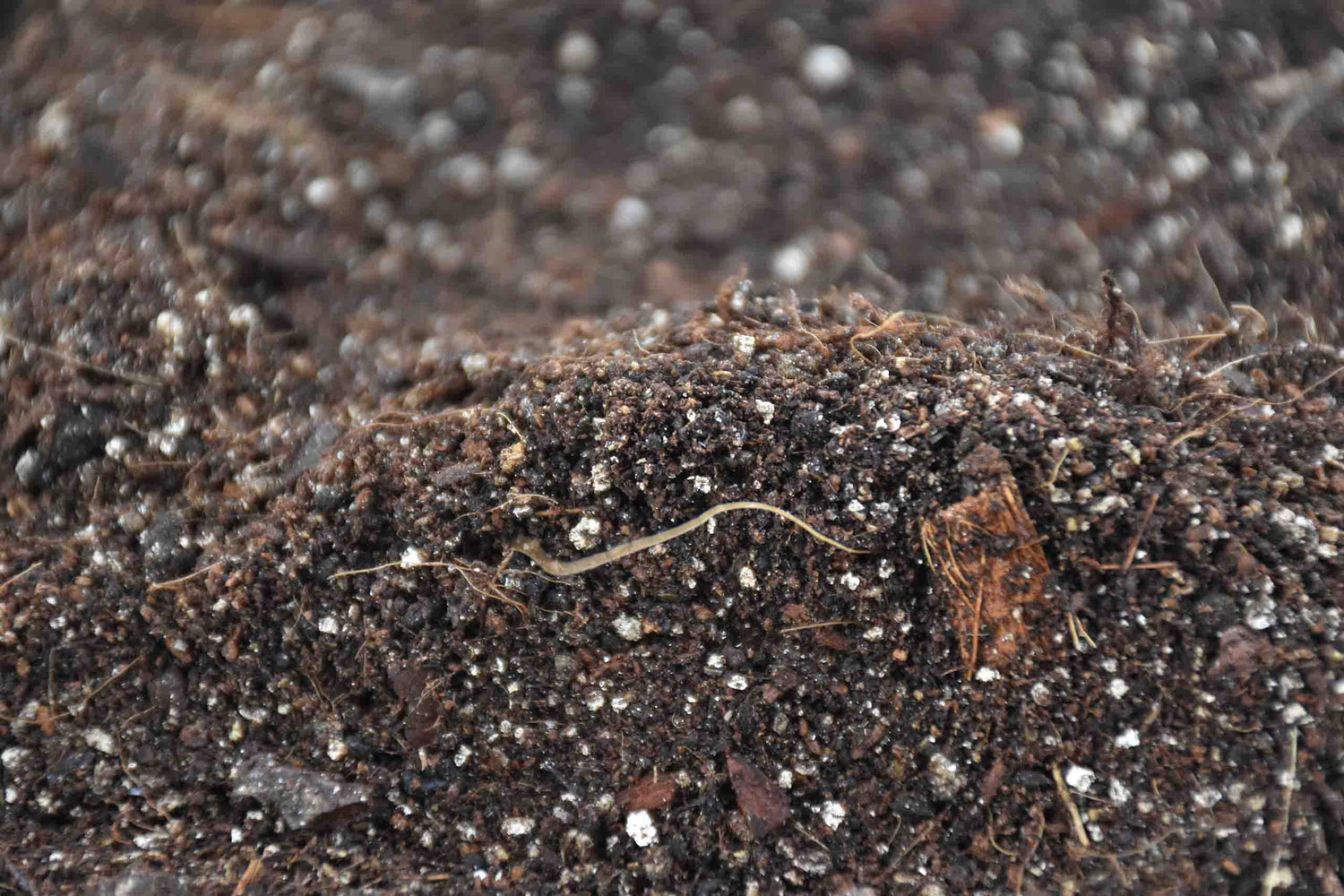
SYBASoil: Premium Soil Mixes
Soil Mixes That Truly Understand Your Plants Not all soil mixes are...

Soil Mixes That Truly Understand Your Plants Not all soil mixes are...
€0,00 EUR
Order before 16:30 on working days = Shipped today
100% satisfaction guarantee
The expert in soil

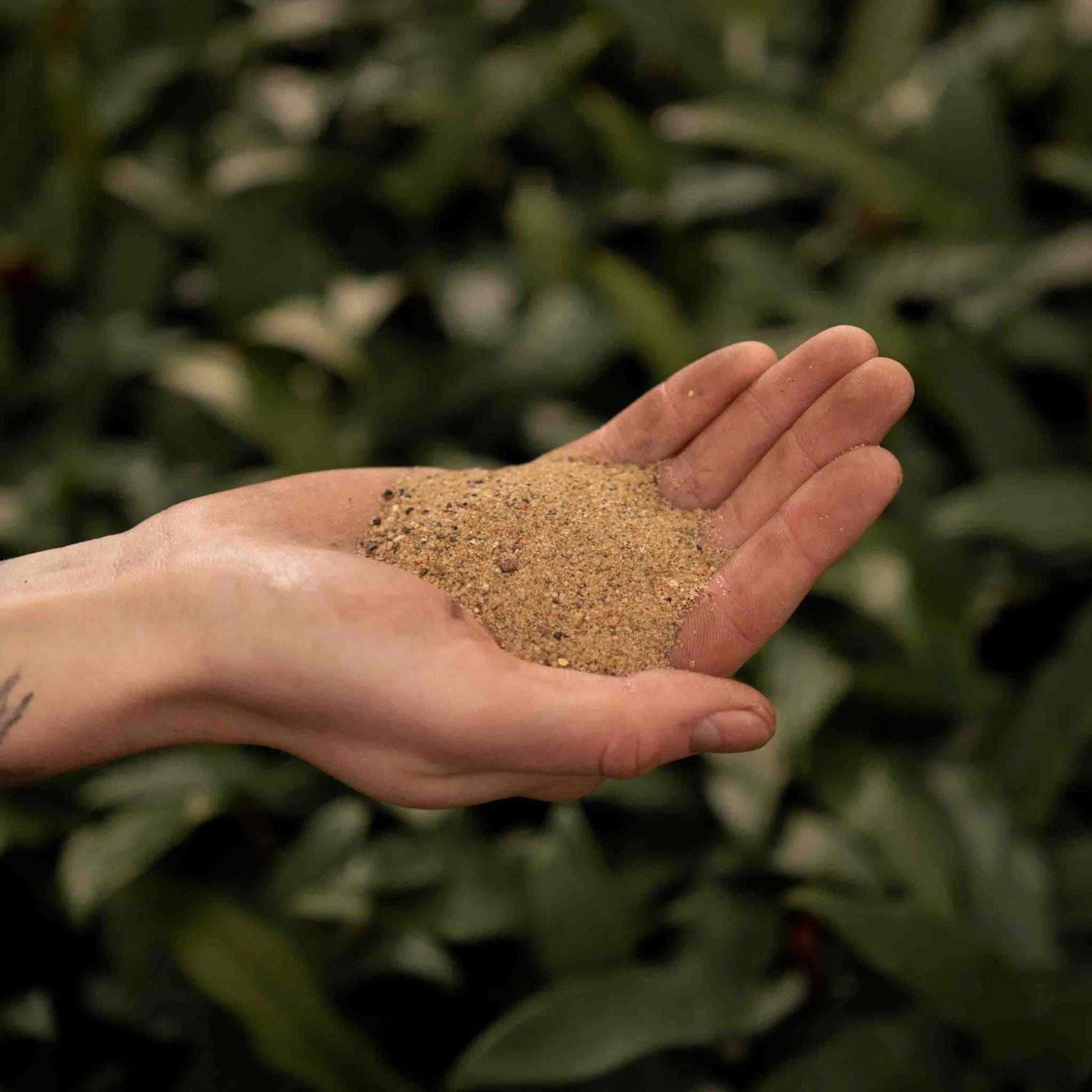
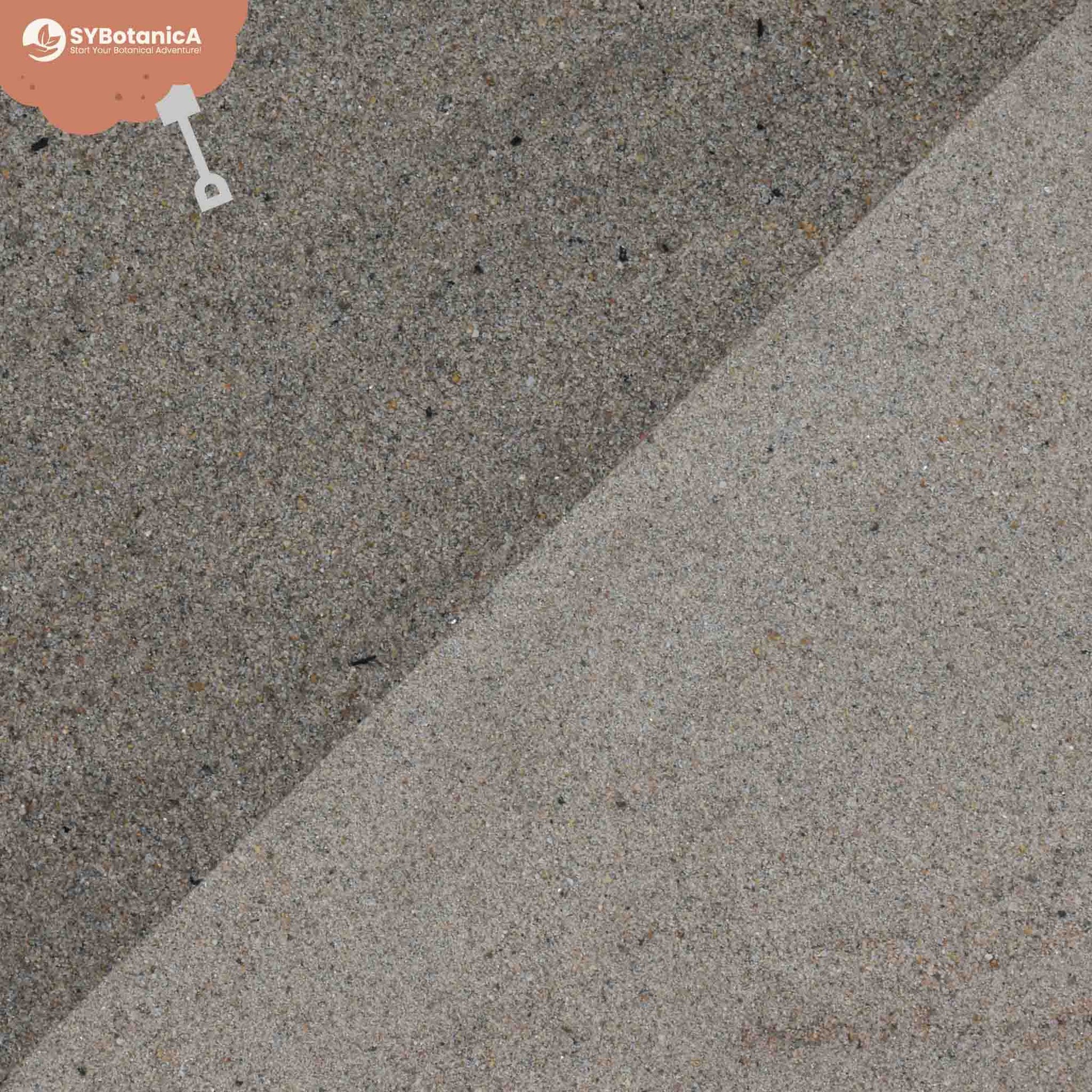
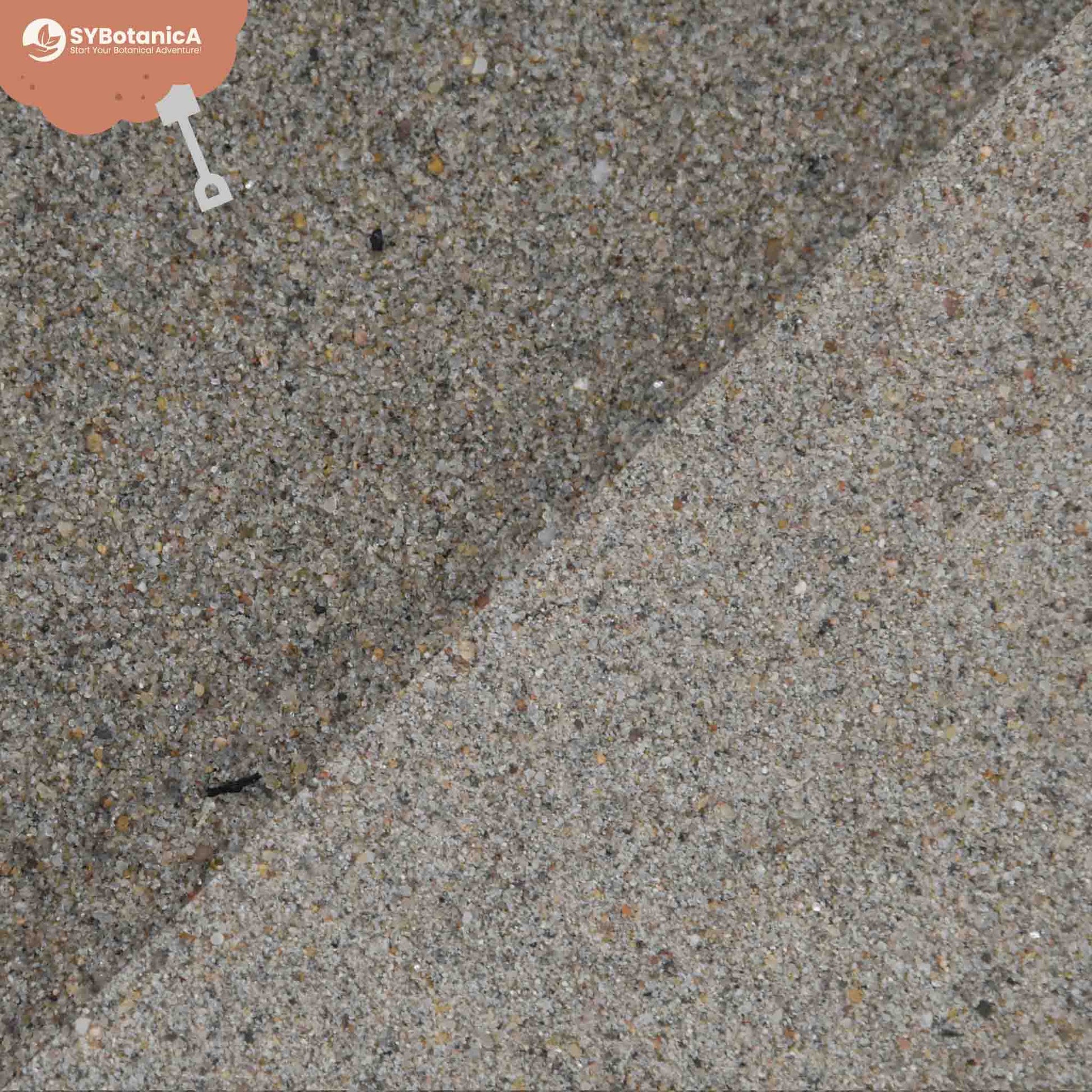
Horticultural sand is a clean, coarse mineral substrate that improves drainage, adds weight, and keeps soil open and breathable. Especially valuable in cactus, succulent, and terrarium soil blends, this non-compacting material helps stabilize root systems, loosen heavy mixes, and create space for air and water to flow freely through the root zone.
At Sybotanica, we offer high-grade horticultural sand in convenient, pre-washed bags. It’s free from salts, organic debris, and clay fines—just sharp, natural sand sized for indoor plant care, ready to use in your next mix or terrarium build.
Unlike beach sand or fine river sand, horticultural sand is made up of sharp-edged, irregular grains that hold their shape in soil and don’t compact. This creates tiny air pockets throughout your mix, giving roots access to oxygen and helping water drain freely—without collapsing structure over time.
Sand can be used on its own in gritty mixes or combined with pumice, perlite, lava gravel, and worm castings to balance airflow, nutrient access, and water flow.
Top-heavy plants—like mature aloes, large cacti, euphorbias, and columnar succulents—often become unstable in lightweight potting mixes. Adding coarse sand to the base or core of the mix introduces the weight needed to hold roots in place and prevent wobbling. It also helps fill gaps in large containers, supporting denser root systems and making them less prone to tipping or shifting during watering.
This simple addition increases root zone support and reduces transplant shock in big or older plants that require more structural soil integrity.
Cacti and succulents thrive in soils that drain fast and stay dry between waterings. Fine peat-heavy mixes hold too much moisture, which leads to root rot and mold. Adding 20–50% sharp sand to your blend increases both drainage and soil texture, allowing roots to access water briefly before the mix dries out evenly.
In terrariums, sand serves as a functional and decorative layer, providing a clean base for stacking materials or adding visual contrast in layered designs. Its grit sand texture also works as a top dressing to reduce fungus gnats and suppress surface algae growth.
Because sand is inert and doesn’t break down over time, it provides long-lasting structure and doesn’t interfere with plant nutrition or soil biology.
While horticultural sand provides weight, drainage, and structural benefits, it’s purely mineral-based and contains no nutrients. For best results, combine it with worm castings or compost to introduce organic matter and beneficial microbial life. This pairing gives your plants the full spectrum of what they need—airflow and anchoring from sand, and nutrient access and bioactivity from castings.
At Sybotanica, we love using horticultural sand as a straightforward way to elevate custom mixes. It’s one of the simplest, most reliable ingredients for improving soil performance—especially when paired with larger mineral substrates like pumice or lava gravel. For cacti lovers, succulent collectors, and terrarium builders alike, it’s a must-have material that helps prevent problems before they start.
| Value's (EN) | Horticulutral Sand |
|---|---|
| Country of Origin | Netherlands |
| Suitable for organic farming | yes |
| Structural stability | Years, as this does not break down |
| EC | 0,093 mS/m |
| pH | 7,8 |
| Specific value's for this product: | N-total <200 mg N/kg, P-total 29 mg P2O5/100g, C-anorganic 0,28%, Carbonic lime 2,3% |
| Safe for pets? | can be harmful if ingested |
| Water retention capacity % | 20-45% |
Premium SYBASoil
Improves soil structure and aeration for houseplants, encourages robust root growth.
In stock
Couldn't load pickup availability
100% Satisfaction Guarantee Or Your Money Back!
Socially responsible production
Horticultural sand is a clean, coarse mineral substrate that improves drainage, adds weight, and keeps soil open and breathable. Especially valuable in cactus, succulent, and terrarium soil blends, this non-compacting material helps stabilize root systems, loosen heavy mixes, and create space for air and water to flow freely through the root zone.
At Sybotanica, we offer high-grade horticultural sand in convenient, pre-washed bags. It’s free from salts, organic debris, and clay fines—just sharp, natural sand sized for indoor plant care, ready to use in your next mix or terrarium build.
Unlike beach sand or fine river sand, horticultural sand is made up of sharp-edged, irregular grains that hold their shape in soil and don’t compact. This creates tiny air pockets throughout your mix, giving roots access to oxygen and helping water drain freely—without collapsing structure over time.
Sand can be used on its own in gritty mixes or combined with pumice, perlite, lava gravel, and worm castings to balance airflow, nutrient access, and water flow.
Top-heavy plants—like mature aloes, large cacti, euphorbias, and columnar succulents—often become unstable in lightweight potting mixes. Adding coarse sand to the base or core of the mix introduces the weight needed to hold roots in place and prevent wobbling. It also helps fill gaps in large containers, supporting denser root systems and making them less prone to tipping or shifting during watering.
This simple addition increases root zone support and reduces transplant shock in big or older plants that require more structural soil integrity.
Cacti and succulents thrive in soils that drain fast and stay dry between waterings. Fine peat-heavy mixes hold too much moisture, which leads to root rot and mold. Adding 20–50% sharp sand to your blend increases both drainage and soil texture, allowing roots to access water briefly before the mix dries out evenly.
In terrariums, sand serves as a functional and decorative layer, providing a clean base for stacking materials or adding visual contrast in layered designs. Its grit sand texture also works as a top dressing to reduce fungus gnats and suppress surface algae growth.
Because sand is inert and doesn’t break down over time, it provides long-lasting structure and doesn’t interfere with plant nutrition or soil biology.
While horticultural sand provides weight, drainage, and structural benefits, it’s purely mineral-based and contains no nutrients. For best results, combine it with worm castings or compost to introduce organic matter and beneficial microbial life. This pairing gives your plants the full spectrum of what they need—airflow and anchoring from sand, and nutrient access and bioactivity from castings.
At Sybotanica, we love using horticultural sand as a straightforward way to elevate custom mixes. It’s one of the simplest, most reliable ingredients for improving soil performance—especially when paired with larger mineral substrates like pumice or lava gravel. For cacti lovers, succulent collectors, and terrarium builders alike, it’s a must-have material that helps prevent problems before they start.
| Value's (EN) | Horticulutral Sand |
|---|---|
| Country of Origin | Netherlands |
| Suitable for organic farming | yes |
| Structural stability | Years, as this does not break down |
| EC | 0,093 mS/m |
| pH | 7,8 |
| Specific value's for this product: | N-total <200 mg N/kg, P-total 29 mg P2O5/100g, C-anorganic 0,28%, Carbonic lime 2,3% |
| Safe for pets? | can be harmful if ingested |
| Water retention capacity % | 20-45% |
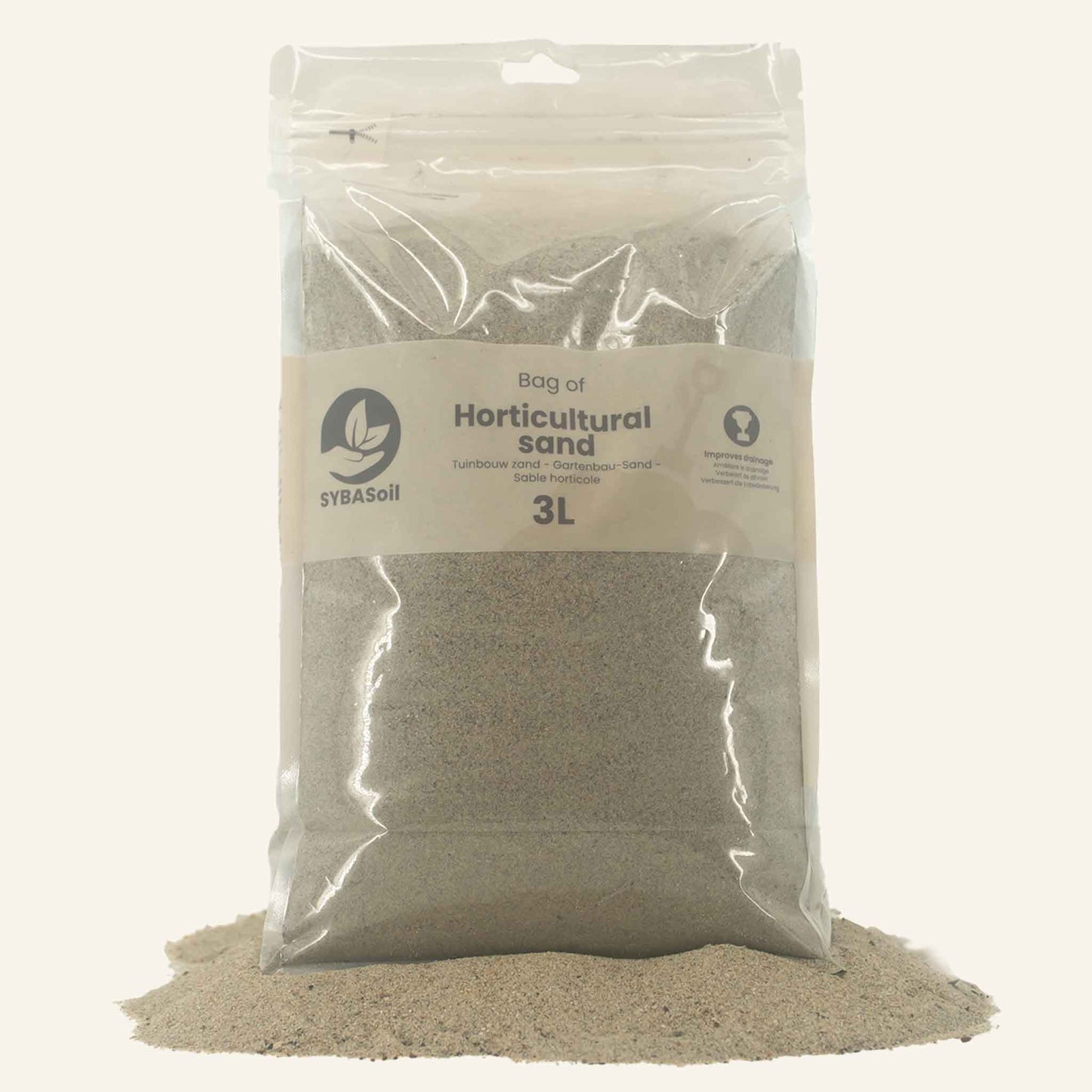
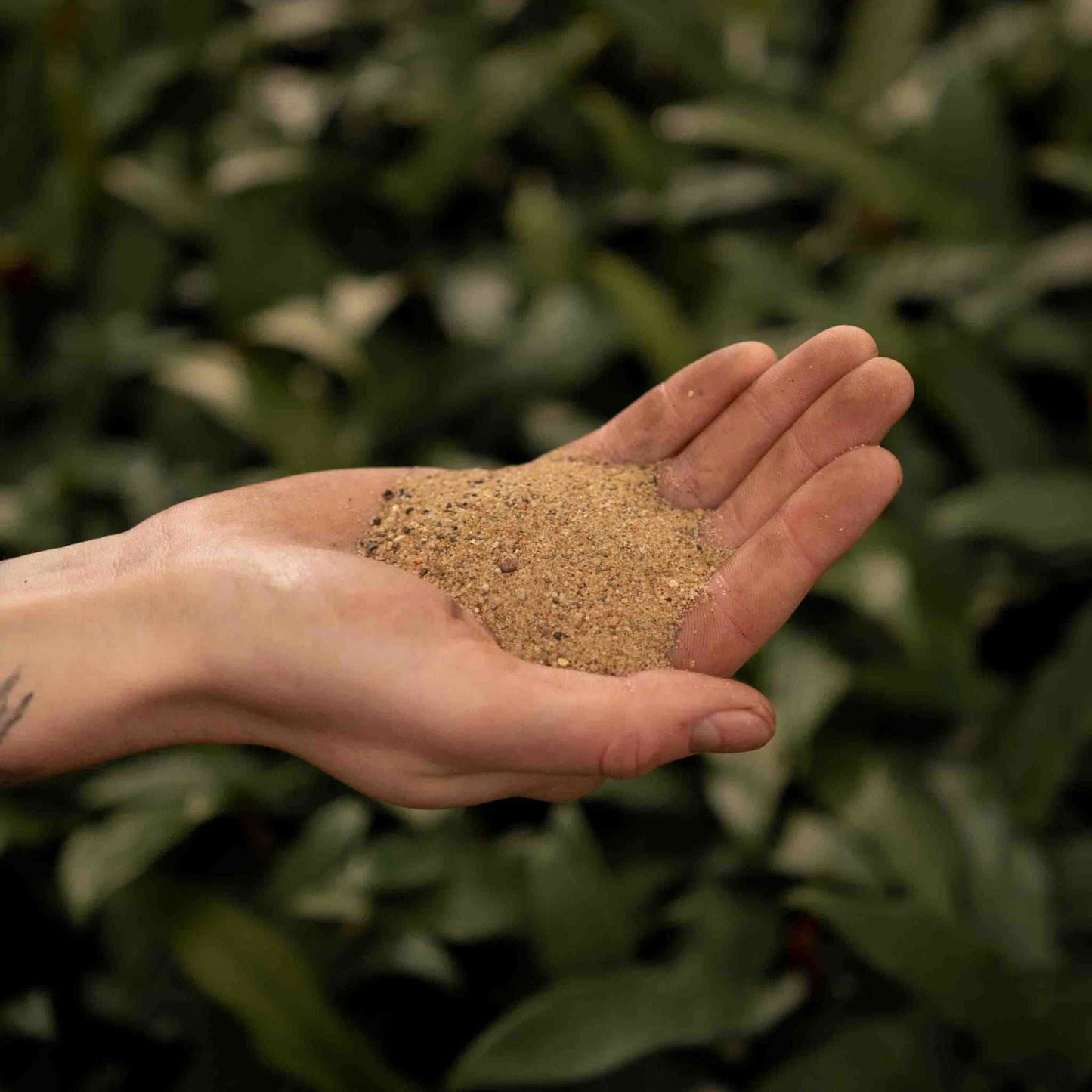


What makes sand "horticultural" or suited for plants?
Horticultural sand is different from regular garden sand in a few ways. It is lime-free, so it won't change the soil's pH as most other sands do.
Usually, sand for plants has both large and small particles. Its sharp edges prevent it from clumping like traditional sand. This improves your soil's drainage.
And lastly, horticultural sand makes soil heavier. This helps top-heavy plants with small roots, like cacti.
Have a different question? Get in contact
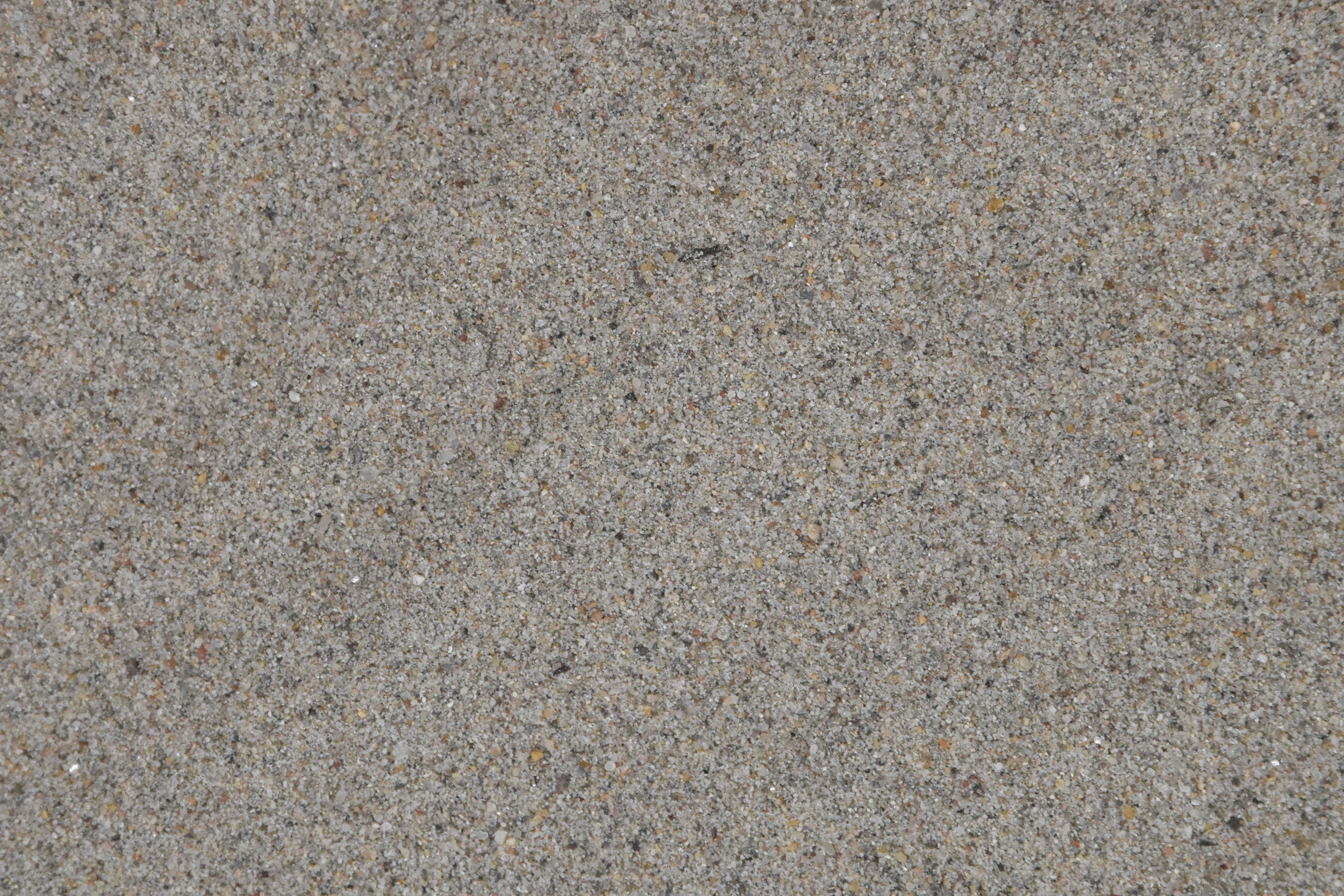
Why Horticultural Sand for your plants?
Clean, coarse horticultural sand that improves soil structure.
Add 5-15% to your SYBASoil mix
Thin-rooted plants & plants that like a bit drier soil
Perfect grain size to prevent compaction. Clean and free of contaminents like salts, chemicals.
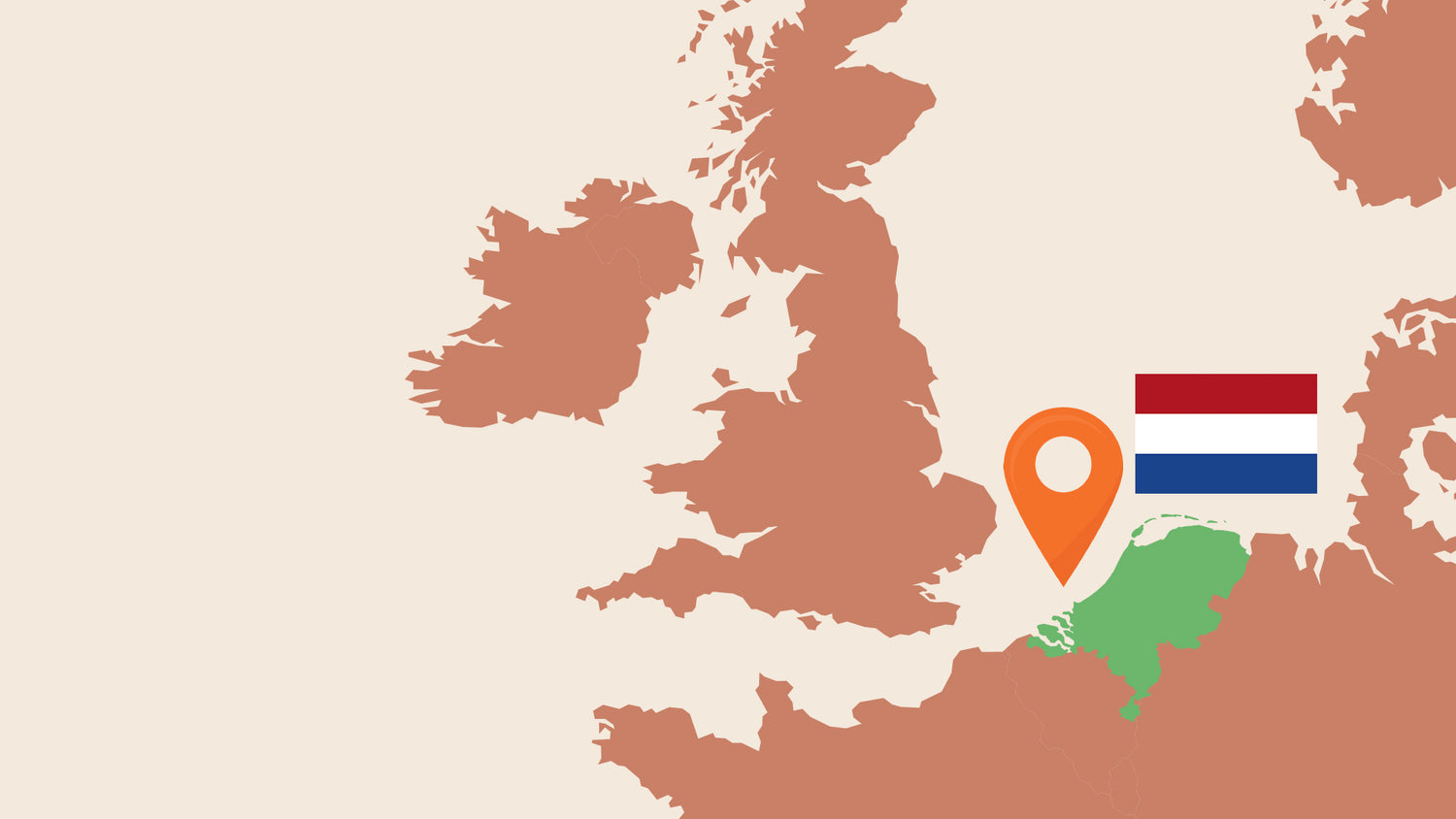
Our sand comes from the city right next to our warehouse in the Netherlands! There, the sand is removed for landscaping & building purposes.
Our sand contains low amounts of clay or silt. High amounts can form a dense, compacted layer of soil, inhibiting root growth.
100% Satisfaction Guarantee Or Your Money Back !
Order before 16:30 on working days = Shipped today
The expert in soil